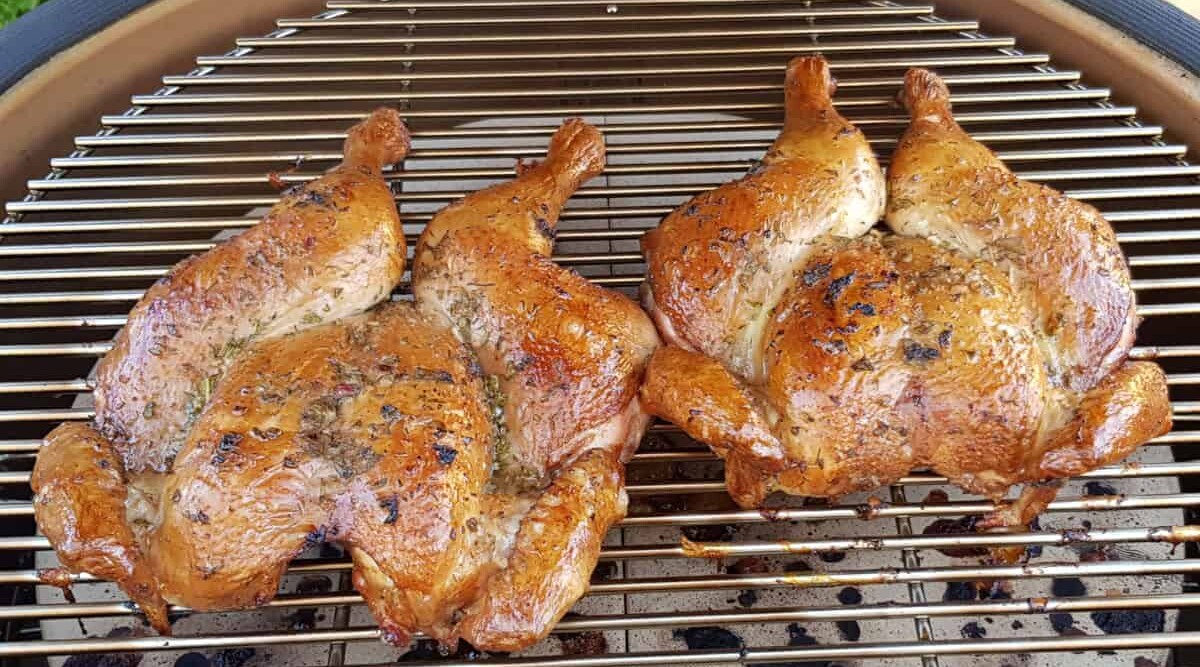
If you’ve never tried to spatchcock a chicken but have heard great things about it, and want to know how to do it, this is the guide for you!
Spatchcocking (or butterflying) is the preferred method of many when it comes to cooking a whole chicken on the barbecue. A whole chicken is an awkward shape and cooking it whole can result in some parts being overcooked, while others are dangerously undercooked.
To keep that from happening you can spatchcock your chicken: Remove the spine and then flatten it.
Since the bird is now flat it allows you to cook the meat more evenly, removing the worry of the legs being done before the breast or vice versa.
If you’re not used to this technique it may look a little intimidating, especially if you’re not too comfortable with knives. But believe me, it is dead simple to prepare.
So in this article, I’ll explain how to spatchcock a chicken, how long to grill the chicken and why it is superior to almost any other grilled chicken method.
Jump to:
What Does Spatchcock Mean?
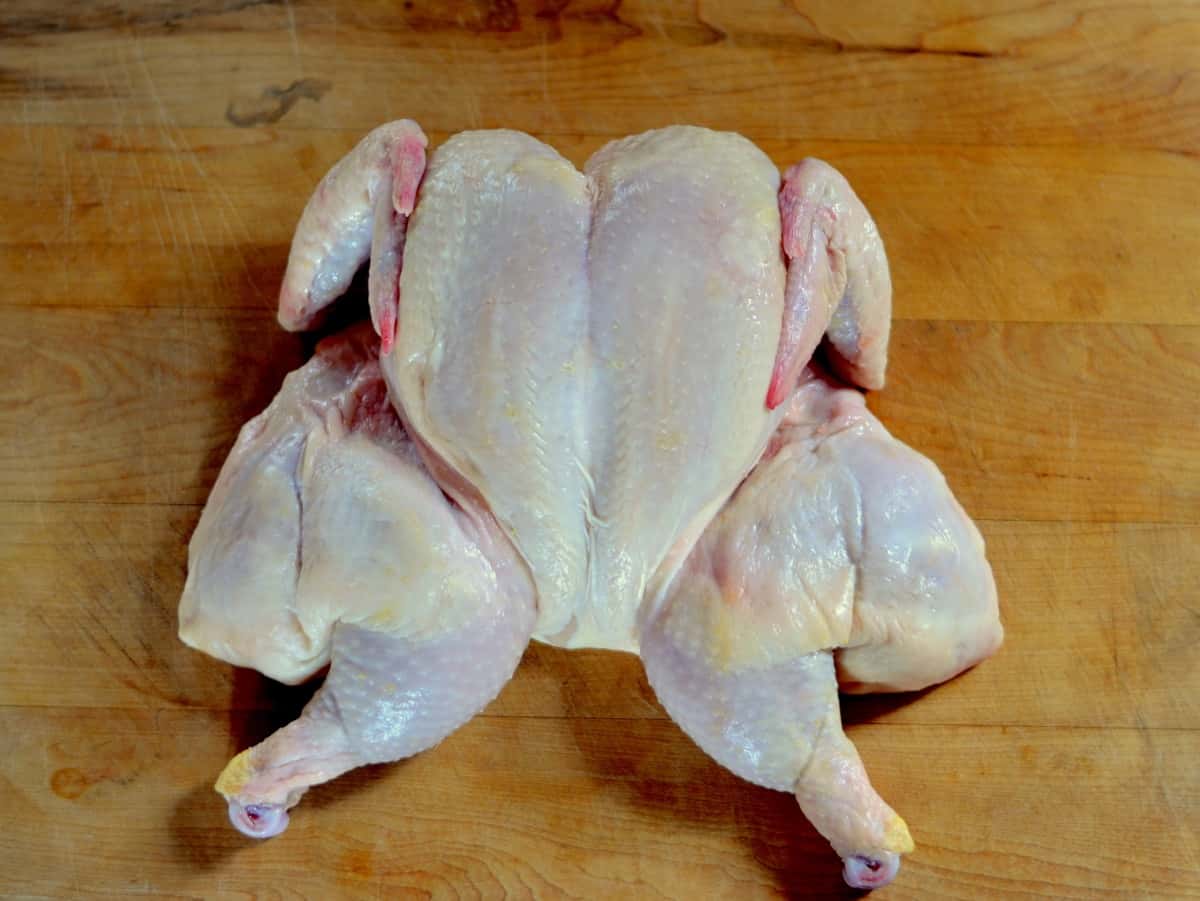
It’s actual meaning from Dictionary.com is
“Noun — A fowl that has been dressed and split open for grilling. Verb (used with object) — To prepare and roast (a fowl) in this manner.“
But in layman’s terms, spatchcocking is a method of preparing poultry and other fowl, in which you entirely remove the backbone so that the bird is completely cut open from neck to tail, and is then crushed flat.
It is often confused with and sometimes called ‘butterflying,’ which is pretty much the same…but not really. Butterflying is more slicing open a cut of meat to roll it out flatter and doesn’t involve removing bone. But the general idea is the same.
Why do You Spatchcock a Chicken? What are the Benefits?
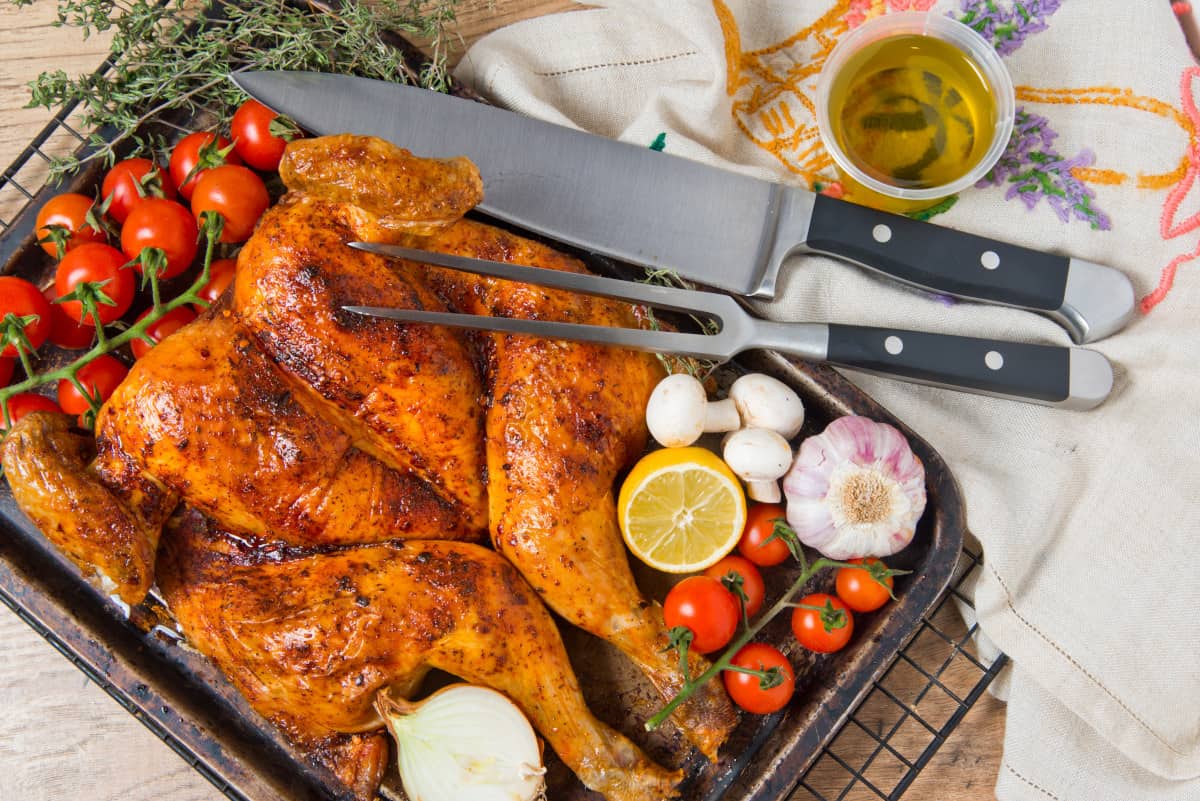
Besides being quicker and easier to cook, there are other benefits to cooking a chicken this way.
Quicker Cooking Time
Unlike a traditionally smoked, roasted, or beer can chicken which can take hours at a lower temp, because a spatchcock chicken is laid open and pressed flat toward the cooking heat — as well as can be turned over to cook what was the inside — A spatchcock chicken can be cooked in as little as half the time as a regular intact chicken!
Not only this but you can cook the chicken at a higher temperature too as high as 400 F if you like because now the outside will not burn before the inside is cooked unlike on a whole bird with a cavity.
Depending on the size of the chicken, you can often cook a spatchcocked chicken in under an hour. You can also tackle far more varied chicken recipes as you can now grill or pan fry the whole chicken, and not only roast it.
Seasoning on Both Sides of Bird
Since the chicken has been cut open and laid flat, you’re able to add seasoning to both sides of the bird. You have access to not only the outside, but easy access to the inside too, what used to be the cavity.
This means that you’re able to get more flavorful rub onto more surface area of the meat, both inside and outside.
Crispy Skin
By cooking the chicken indirect and at higher heat that normal, you’re able to render the fat out of the skin more easily, causing the skin to become beautifully crispy. Just one of the tips you can find in our guide on how to get crispy chicken skin on the grill.
Even Cooking — No Undercooked Breast or Overcooked Things
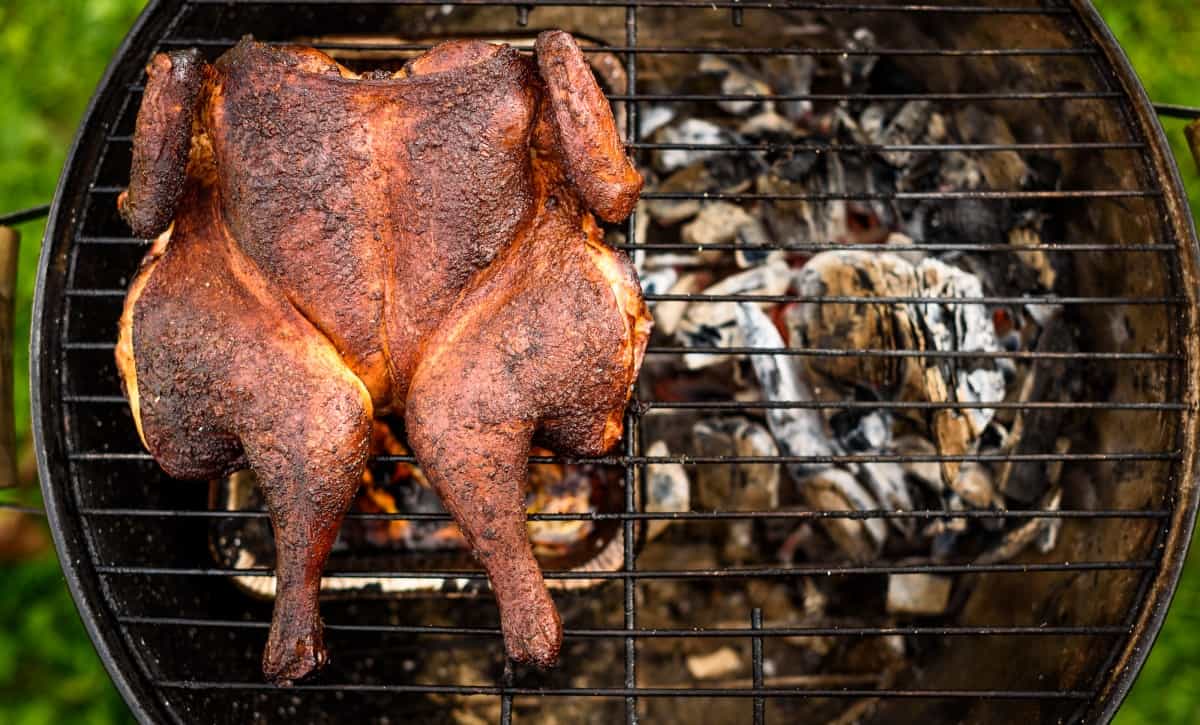
A chicken is thicker in some places than others, plus there is a large cavity that heat needs to permeate and cook through, which takes different times for different parts on a whole bird.
By spatchcocking the chicken, you are flattening it out, making it a more even thickness, but also you can cook the inside the bird by merely turning it over instead of having to wait for the heat to permeate through. This means you get more even cooking.
On a whole chicken, the breast and thighs cook at different rates, and are best at different temperatures. The breast at 165 F, the thighs at more like 175 F.
By spatchcocking and laying the bird flat, you can cook the chicken with the things toward the heat source, so they cook slightly quicker than the breast, meaning you have more control and can reach the perfect temperatures for both parts far more easily.
No more undercooked breast or overcooked thighs! Just make sure to use an instant read thermometer for accurate temperatures and safety! If you don’t have one, pick one up from our guide to the best instant-read thermometers.
How to Spatchcock a Chicken Video
A Spatchcock chicken is easy to prepare — when you know how.
I’ll go into step-by-step written details below, but this video from ‘BBC Good Food’ does a great job of showing how to prep it for those who like things a bit more visual.
How do You Spatchcock a Chicken Step-by-Step
Prepare the Chicken
Before we do anything, we should trim the chicken of any neck parts and gizzards (which we can keep for use later in stock.)
I also like to rinse out the chicken in a sink of water. Do not rinse it out under a running tap, as the splashing water has the potential to spread bacteria far and wide.
So rinse the chicken in a sink full of still water, and then pat dry with kitchen towel.
Remove the Backbone
First, place your chicken breast side down on a chopping board, with the neck end facing away from you.
Using a pair of poultry shears or strong kitchen scissors, cut along one side of the backbone from the tail end to the neck, making sure to keep close to the backbone and removing as little of the meat as possible.
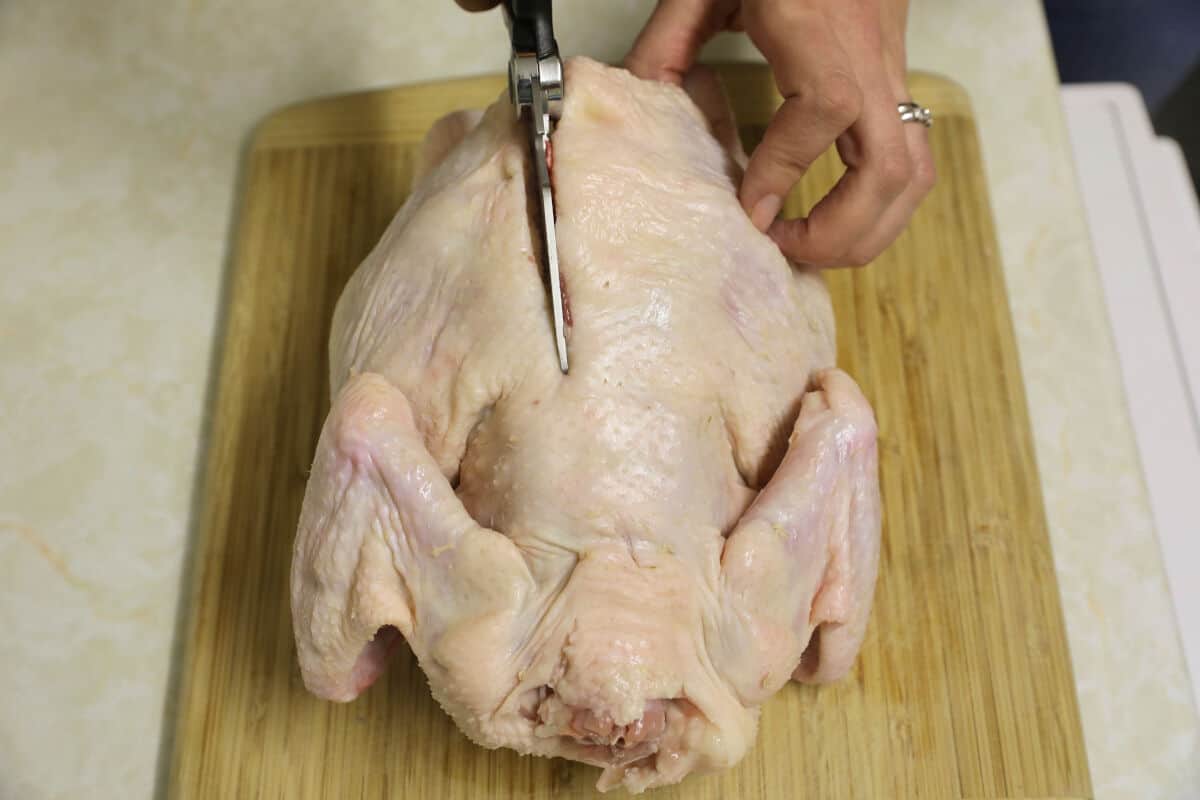
The chicken cavity will now have been ‘cut open.’
Next, cut the other side of the backbone from the tail end to the neck.
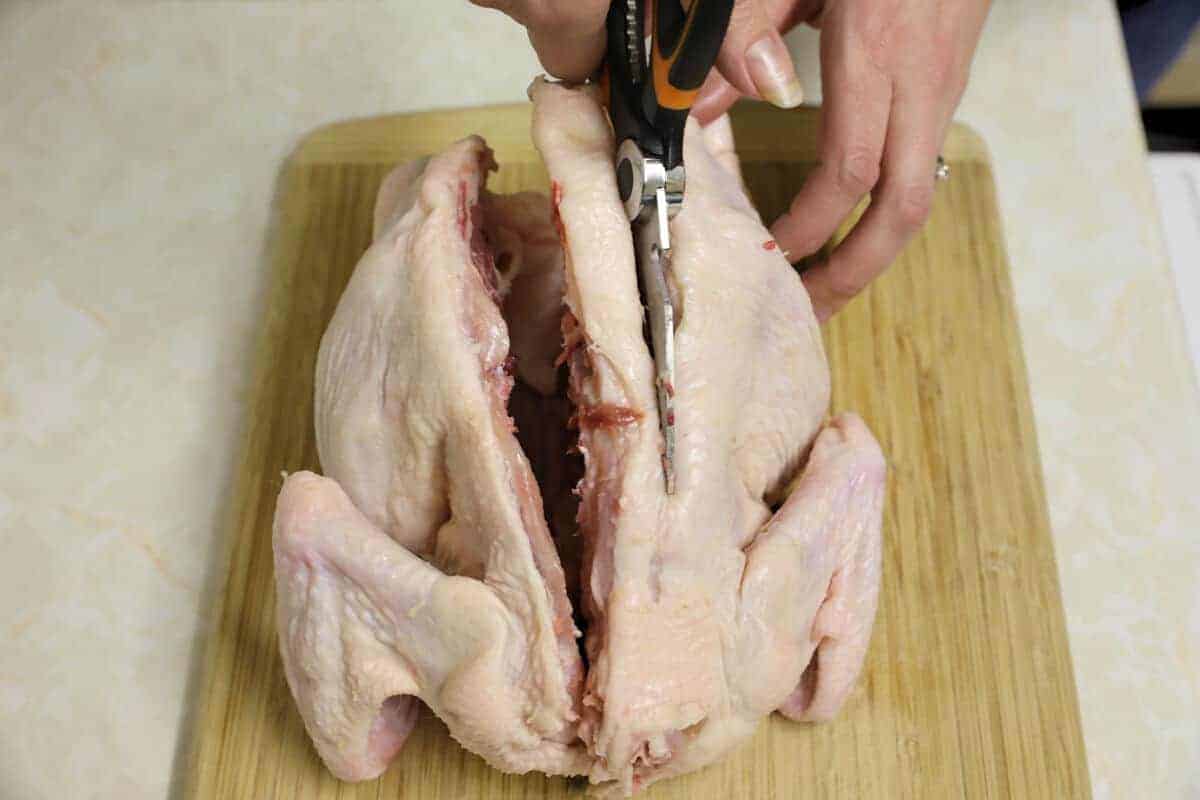
The backbone will now be completely removed, and you can keep this for future use in a stock.
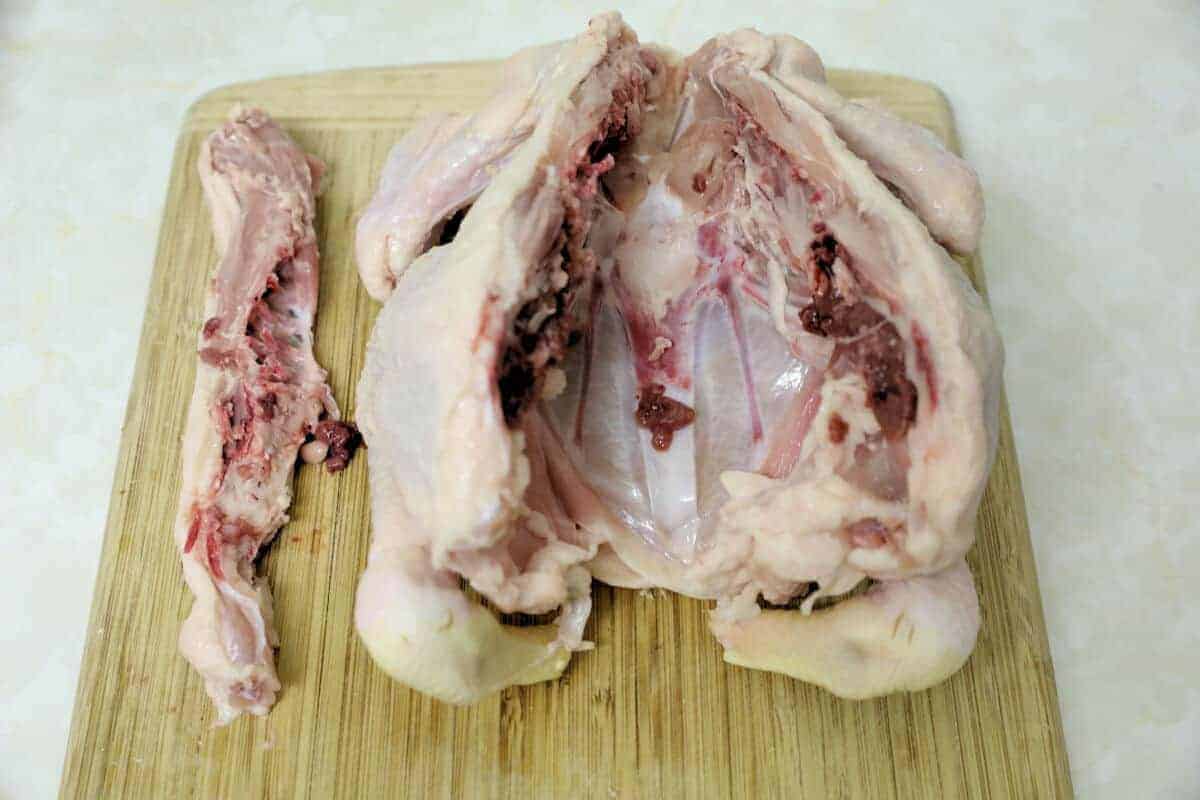
Now you can get into the cavity, clean out any remaining giblets, internal organs or blood clots inside the chicken before moving onto the next stage.
Break the Breastbone to Lay it Flat
Once you have removed the spine, use a knife to cut through the small piece of cartilage just above the breastbone, near the neck. It’s a v-shaped part on the neck, (the sternum I believe?)
This just helps the breaking of the breastbone to be easier when we flatten it, so the break is in exactly the right spot, down the center.
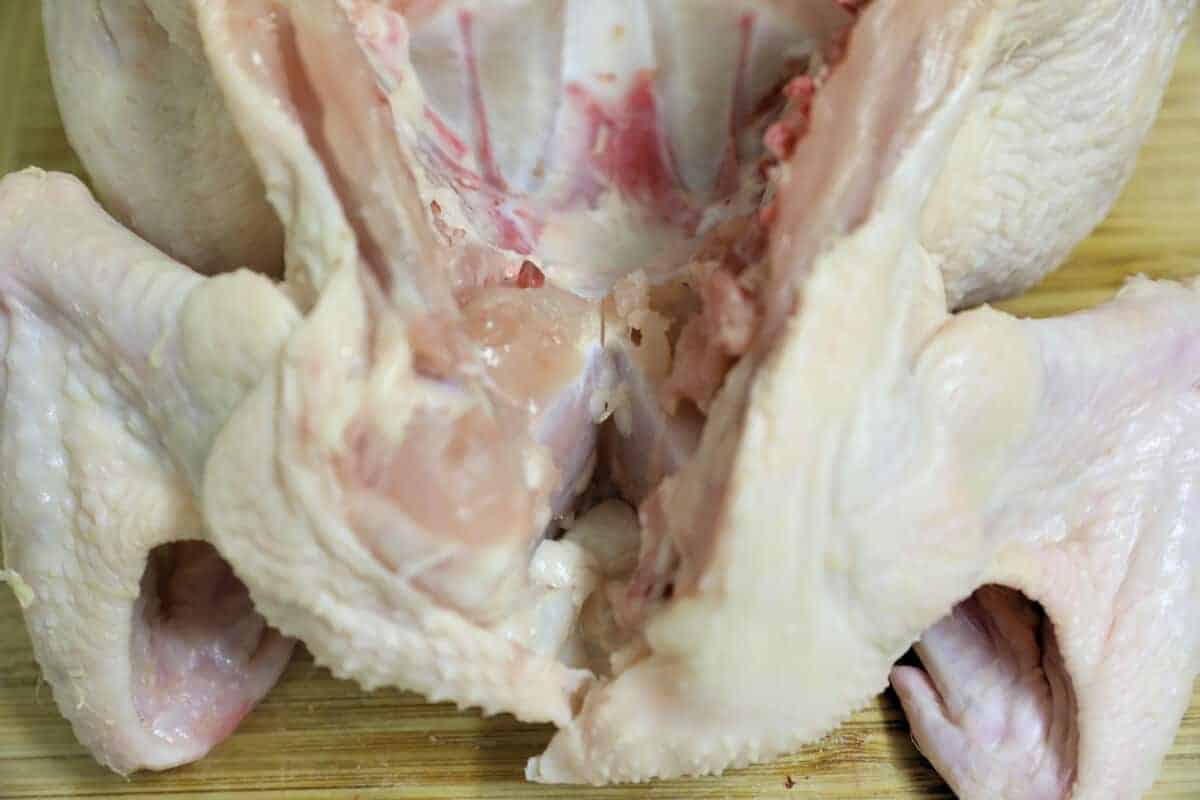
Now, turn the bird breast side up.
You now want to use the palms of your hands to push down on the breasts, breaking the breastbone, forcing the cavity open and crushing the bird down until it is squashed flat.
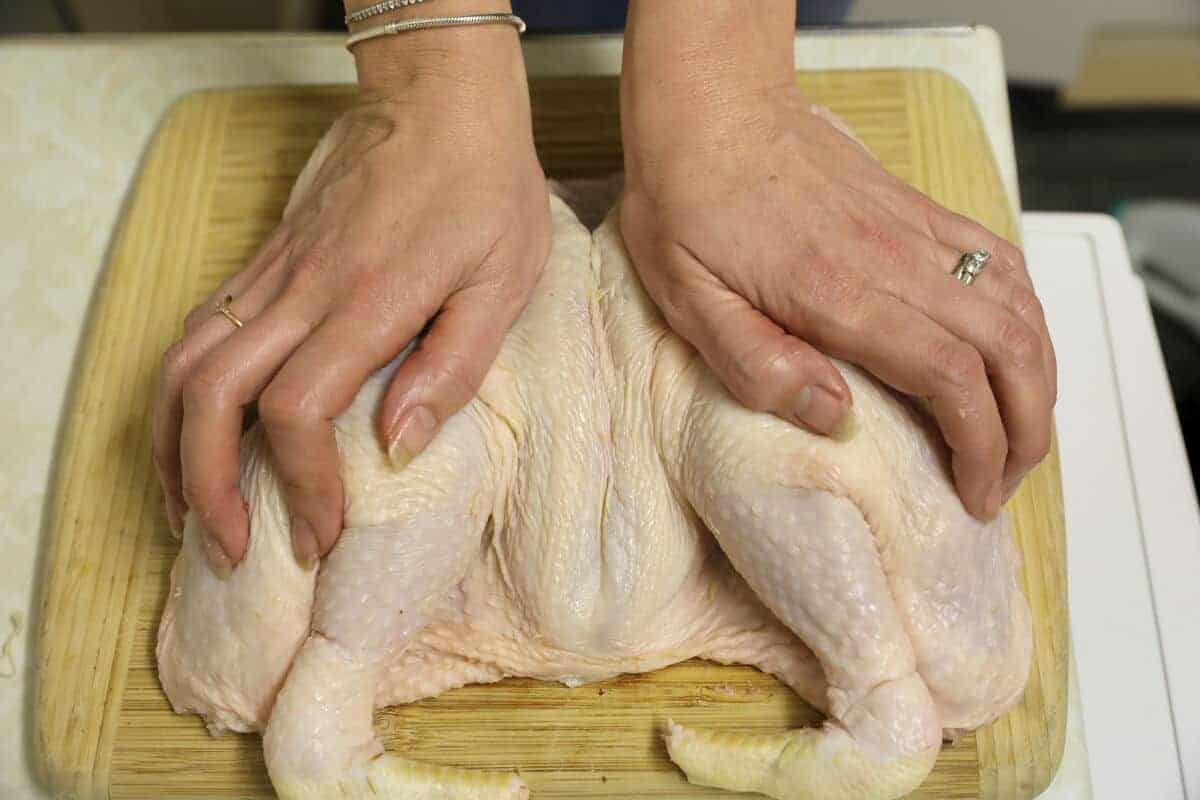
You will hear some cracking and breaking as you push the bird down flat, this being the breastbone and is to be expected.
Trim — and Optionally Remove Wing Tips
Now is a good time to trim off any excess skin or fat. Also, you can now remove the wingtips if you desire, though this is optional.
The reason many people remove them is that they can burn during cooking. So if you wish, you can snip them off and keep with the other trimmings for use in stock later.
However, you can also ‘tuck the wings in and under the breasts’ instead of snipping them off. They will still overcook slightly, but be VERY crispy and wonderfully flavorful. But hey, chefs treat! So I leave them on personally.
You now have a spatchcocked chicken, ready for grilling!
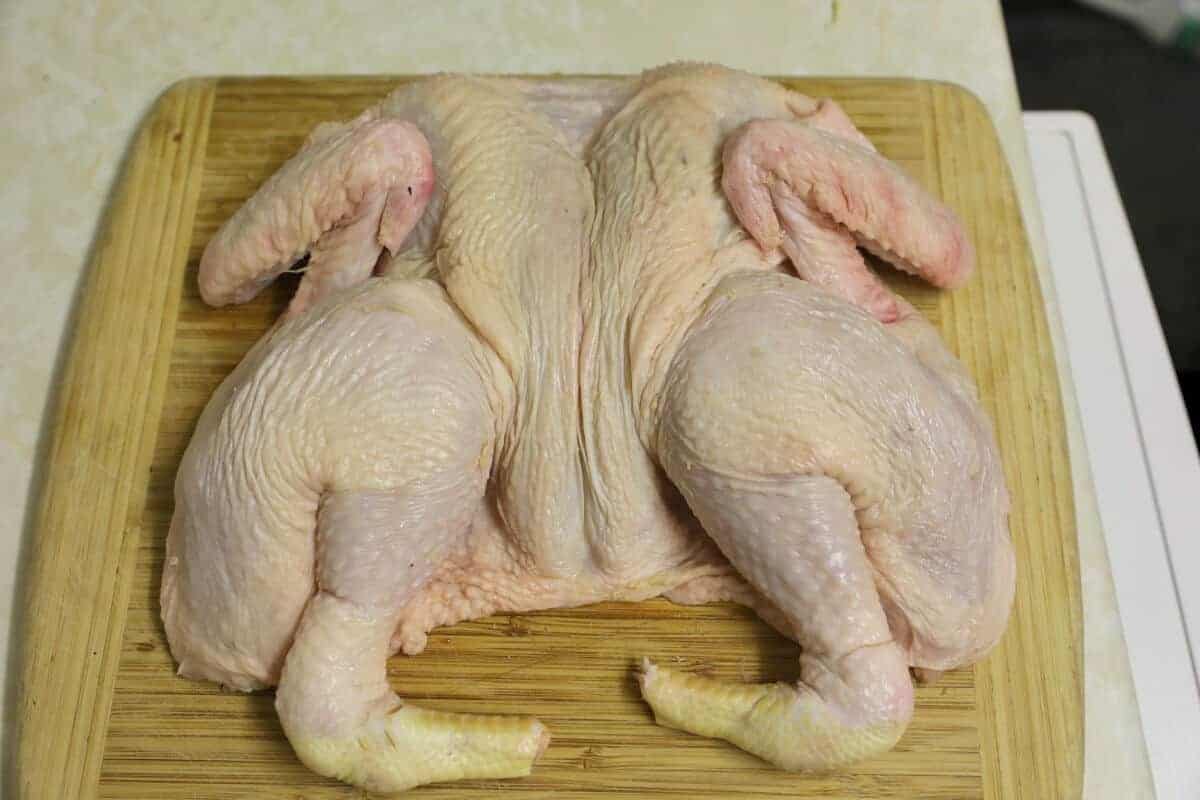
How to Spatchcock Chicken With a Knife (Without Shears)
You can spatchcock a chicken without kitchen shears or scissors by using a knife, it’s just not quite as easy.
If using a knife instead of shears or scissors, follow these steps:
- Place the chicken breast side up (as opposed to breast side down if using shears!) on a cutting board.
- Place a long knife into the cavity of the bird from the tail end, until the knife comes out the other side.
- Make sure the knife is tight to and along one side of the backbone.
- Press down firmly to cut right through, from tail to neck.
- Now do the same to the other side of the backbone.
- Continue with the extra steps above.
How to Grill a Spatchcock Chicken
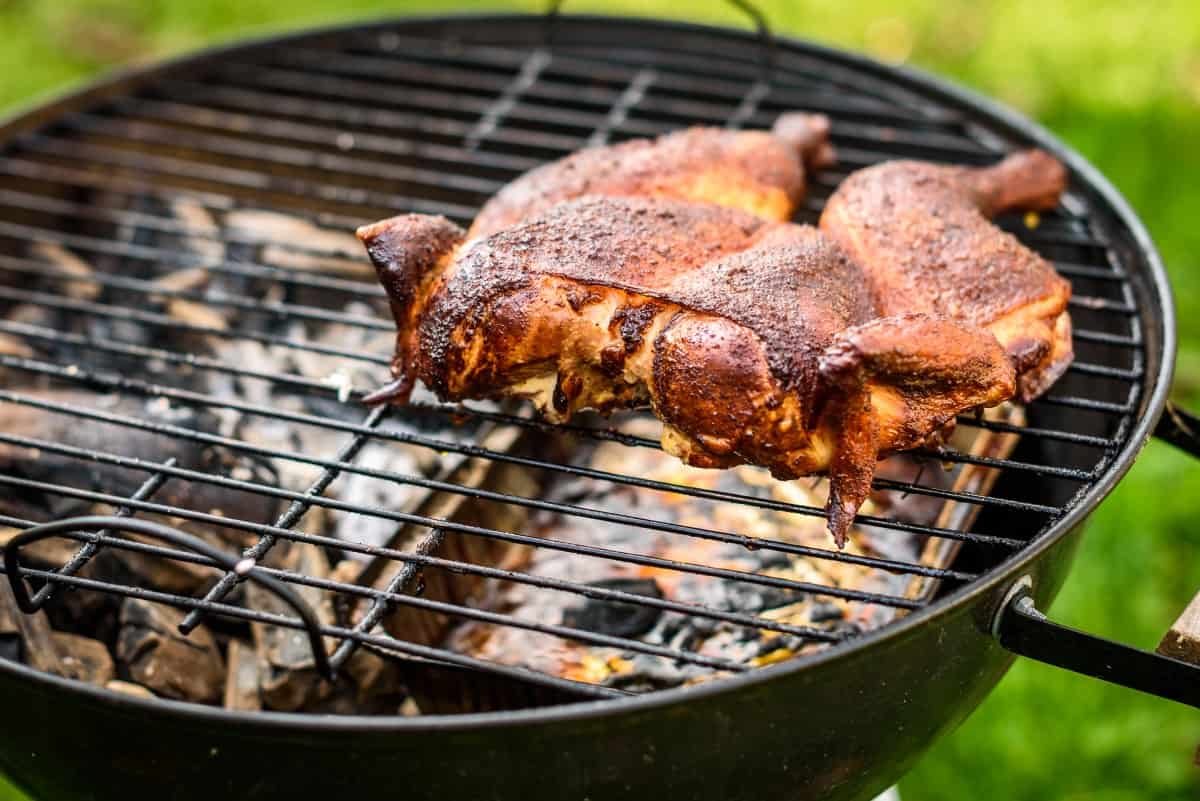
Now you have a spatchcock chicken, let’s discuss the best way to grill it. After all, that’s what this is all about, the fantastic results of cooking a bird prepared in such a manner.
Add Rub/Seasoning
While a rub or other seasoning is entirely optional, I feel it is a step that shouldn’t be skipped. There are many commercially available products on the market, or you could try your hand at making your own BBQ rubs?
If you choose to make your own, remember that sweet is not a flavor that transcends well with chicken, so don’t reach for the brown sugar like you’re making racks of ribs.
Instead, focus on the basics like salt, pepper, garlic, onion, and more savory spices like paprika, chili, and cumin.
Not sure how you want to season your chicken? No worries! We have a good article on how to create a rub for smoked chicken.
Grill Indirect
Prepare your grill for two-zone indirect grilling and get your fire hot. You’re going to want it to be at least 400 °F to render out the fat from the skin and make it crispy.
You can cook at a lower temperature, but you will likely be left with a rubbery skin that may taste good thanks to the seasoning, but wouldn’t be the greatest to eat.
You can add smoking wood if you like, though often the flavor from a charcoal grill is enough to flavor the bird. If you do want to add some smoke, choose one of the milder woods such as Alder, or a fruit wood like Apple or Cherry. We discuss flavor wood choices in more depth in our article on the recommended woods for smoking chicken.
Place your chicken on the indirect (or cool) side. Place it skin side up to keep the skin from sticking to the grill grates.
After an hour, use an instant-read thermometer to check your internal temp in the leg, thigh, and breast. If it reads 165 °F your chicken is cooked. If not, just place the lid back on the grill and wait 10 minutes, then check again.
Separate Meat and Serve
Once your bird is cooked, remove it from the grill and serve immediately. If you let it rest for too long, or if you cover it in tinfoil you’re going to ruin the skin we’ve worked so hard to get crispy!
To serve, you can take a sharp chef’s knife and separate the cuts of chicken: leg, thigh, breast, and wings.
Spatchcock Chicken FAQs
What Does Spatchcock Mean in Cooking
It means to take some poultry or wildfowl, entirely remove the backbone to open out the cavity, and then crush the bird, so it lays down flat.
It results in a bird that is more even throughout in thickness and cooks in less than half the normal time, compared to normal smoking times.
Why do You Spatchcock a Chicken
There are multiple benefits.
You flatten the bird, so it cooks more evenly, removing the danger of overcooked breast or undercooked thighs.
It also cooks in less than half the time, allows you to grill or pan fry the whole bird, and results in crispier skin as you can cook it hotter.
Why is it Called Spatchcock
I struggled to find the roots of the term, but they have some excellent info on the origins of the word spatchcock over on the naked whiz website.
My favorite possibility is:
“… Alan Davidson explains in The Oxford Companion to Food: “The theory is that the word is an abbreviation of ‘dispatch the cock,’ a phrase used to indicate a summary way of grilling a bird after splitting it open down the back and spreading the two halves out flat.”
What’s the Difference Between Spatchcock and Normal Chicken
Quite simply a spatchcocked chicken is one with the backbone removed and the bird squashed down flat. A ‘normal chicken’ is still whole, with backbone intact, and has a large internal cavity.
Is Spatchcock the Same as Butterfly
Yes and no. Clear as mud? OK…
When you butterfly something, you are taking a knife to slice into the meat and opening it up to lie flatter and wider, a bit like opening the pages of a book.
When spatchcocking, you are removing the backbone, and then squashing flat, not cutting into any part of the meat.
However, the result is pretty much the same: A thinner and more even thickness meat that can take on more seasoning and rub, while also cooking quicker.
Conclusion
If these instructions on how to spatchcock a chicken seem easy, well that’s because it is. And we hope you come away from this article deciding to try your hand at it.
If you’ve already mastered this technique, leave us a comment below telling us any tips, tricks or recipes for making spatchcock chicken. Or if you attempt it for the first time after reading this, let us know how it goes, good or bad.
As always, if you’ve enjoyed what we had to say and think it can be useful to someone else, please share this article with your friends!
Happy grilling!


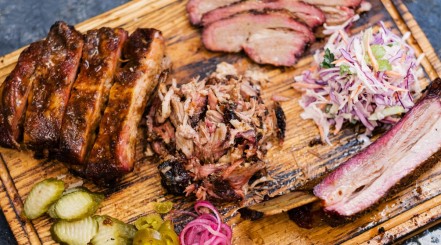
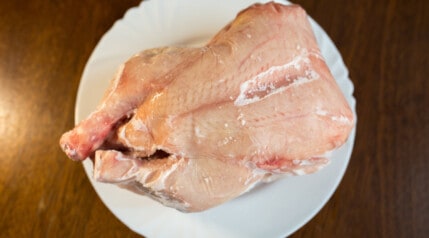
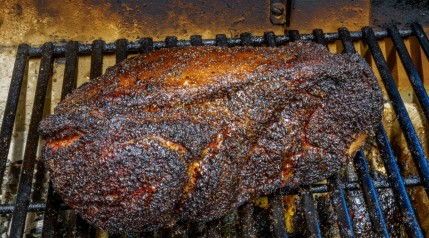
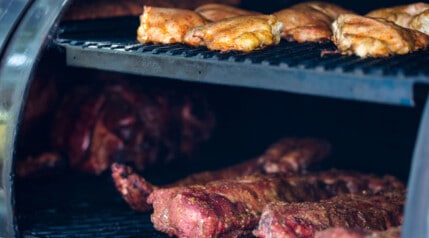
Will this work with a medium size turkey, 12 lbs, on a wood fired smoker?
Hi Sam,
If you can fit the bird on the smoker after spatchcocking — I mean, if your grill space is large enough — then yes, sure. It’s a technique that works with anything really. I often butterfly lamb legs, sometimes chicken breasts (and more besides) in order to reduce their cooking time, or to even out thicknesses across meat to have a more even cook.
I would say though — and this is only my opinion — I would cook the turkey whole. A large, nicely colored bird after smoking, placed whole on a dinner table with surrounding sides is a good centerpiece, has a bit of a wow factor, is impressive looking. You somewhat lose that after spatchcocking. For chickens, which are dime a dozen and eaten perhaps multiple times each month, hey ho, it’s a good technique to cook faster and more evenly. But with a turkey, which is somewhat more of a rarity and a bit of an eating event, I would leave it whole just for better presentation at the table 🙂